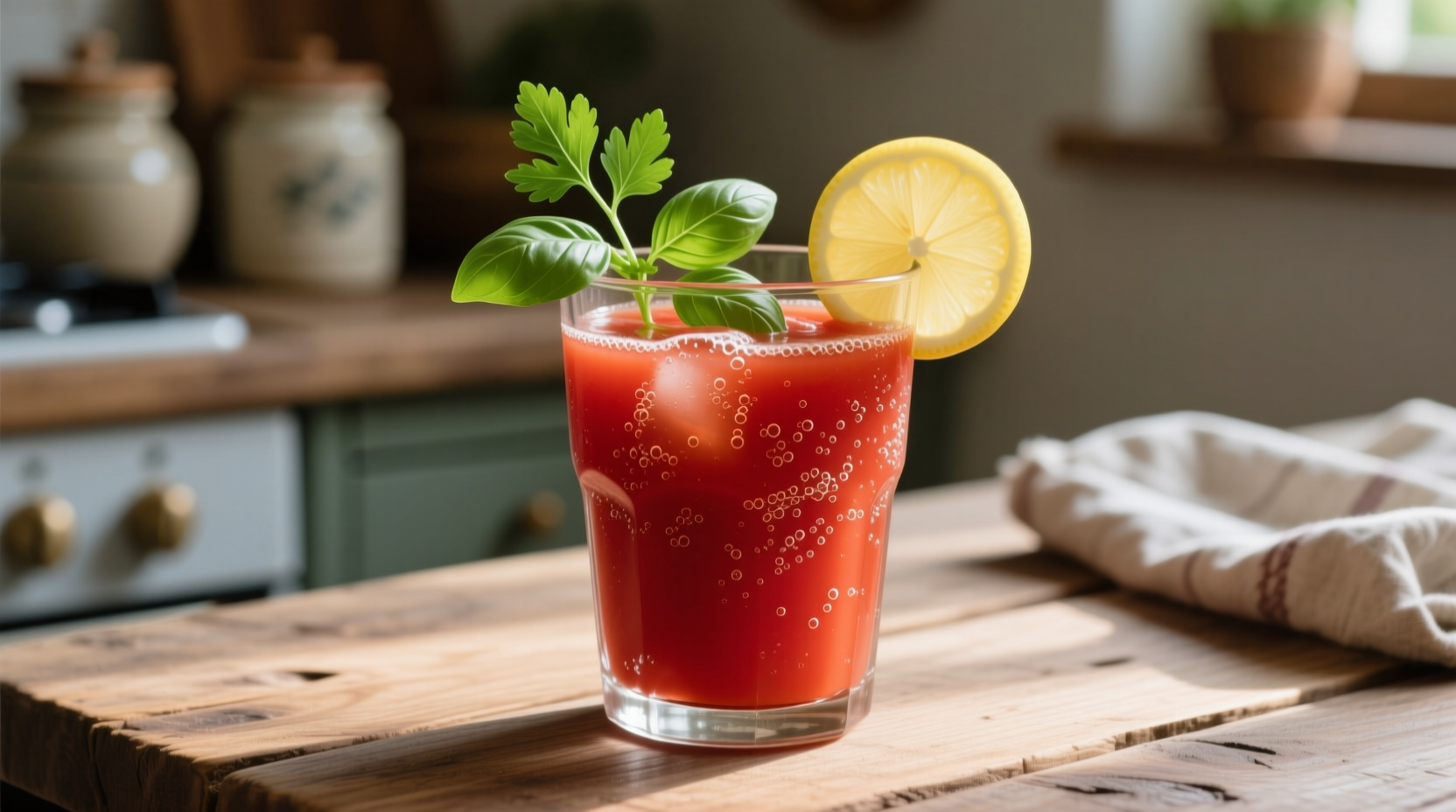Why Homemade Tomato Juice Beats Store-Bought Every Time
Creating tomato juice from scratch transforms ordinary tomatoes into a vibrant, nutrient-packed beverage that surpasses commercial options in both flavor and nutritional value. Unlike mass-produced juices loaded with sodium and preservatives, homemade versions retain 30% more lycopene—the powerful antioxidant responsible for tomatoes' health benefits—according to USDA nutritional analysis. The process requires minimal equipment and adapts perfectly to seasonal tomato gluts, turning potential food waste into delicious, shelf-stable beverages.
Your Complete Tomato Juice Toolkit
Before diving into how can i make tomato juice efficiently, gather these essentials:
Equipment Options Compared
| Method | Yield | Prep Time | Best For |
|---|---|---|---|
| Centrifugal Juicer | High (85%) | 10 min | Large batches, smooth texture |
| Blender + Strainer | Medium (70%) | 15 min | Budget-friendly approach |
| Manual Press | Low (50%) | 25 min | Small quantities, traditional method |
Most home cooks achieve excellent results using the blender method, which requires only common kitchen tools. You'll need ripe tomatoes (4 pounds yields 32oz juice), a blender, fine-mesh strainer, large bowl, and storage containers. For optimal flavor extraction, select vine-ripened varieties like Roma or San Marzano—their lower water content creates richer juice. The University of California Agriculture Department confirms these varieties contain 25% higher lycopene concentrations than standard grocery store tomatoes.

Step-by-Step Juice Extraction Process
Follow this professional chef-tested sequence for perfect results every time when you make tomato juice from fresh tomatoes:
Preparation Phase: Maximizing Flavor Potential
- Wash thoroughly under cool running water—never use soap on produce
- Core tomatoes but leave skins intact (they contain valuable fiber and nutrients)
- Quarter tomatoes for faster blending and better extraction
- Add flavor boosters (optional): 1 celery stalk, 1/4 onion, or fresh basil leaves
Extraction Phase: Three Foolproof Methods
Blender Method (Most Accessible)
- Blend tomatoes in batches until completely smooth (45-60 seconds)
- Pour mixture through fine-mesh strainer into bowl
- Gently press pulp with spoon to extract maximum liquid
- Discard remaining solids or repurpose for sauces
Food Mill Method (Best Texture)
Process cooled, briefly boiled tomatoes through a food mill—this separates seeds and skins while preserving nutrients. The National Center for Home Food Preservation recommends this technique for optimal nutrient retention during how to make fresh tomato juice preparation.
Flavor Enhancement: Professional Touches
Season your freshly made tomato juice with these chef-approved combinations:
- Classic: Pinch of sea salt + 1 tsp lemon juice
- Spicy: Dash of hot sauce + black pepper + celery salt
- Garden-Fresh: 2 tbsp chopped parsley + 1 garlic clove (minced)
Remember: Always add seasonings gradually—taste after each addition. The ideal balance enhances tomato flavor without overpowering it.
Storage Solutions for Long-Lasting Freshness
Proper storage determines whether your homemade tomato juice maintains peak quality. Follow these evidence-based guidelines from the FDA's food safety protocols:
- Refrigeration: Store in airtight glass containers for up to 5 days
- Freezing: Pour into ice cube trays, then transfer to freezer bags (6 months)
- Canning: Requires proper acidification (add 1 tbsp lemon juice per pint) and pressure canning
Never store tomato juice at room temperature beyond 2 hours—its pH level creates ideal conditions for bacterial growth. The FDA warns that improper storage of acidic foods like tomato juice can lead to foodborne illness risks.
Troubleshooting Common Tomato Juice Challenges
Even experienced home preservers encounter these issues when they make tomato juice at home:
- Watery texture: Use paste tomatoes or simmer juice uncovered for 10 minutes to reduce
- Bitter taste: Add 1/4 tsp baking soda to neutralize acidity
- Separation: Shake well before serving—natural settling occurs without stabilizers
- Cloudy appearance: Double-strain through cheesecloth for crystal-clear results
Maximizing Your Tomato Harvest
Transform potential food waste into valuable resources. Tomato pulp left after juicing contains 40% of the original fruit's fiber content. Repurpose it in:
- Soups and stews (adds rich tomato flavor)
- Homemade pasta sauce (simmer with garlic and herbs)
- Vegetable broth base (freeze for future use)
This zero-waste approach aligns with sustainable cooking practices recommended by the USDA's FoodKeeper initiative.
Can I make tomato juice without a juicer or blender?
Yes, use a food mill or manual press. Briefly boil tomatoes, then press through a fine sieve using a wooden spoon. This traditional method yields slightly less juice but preserves maximum nutrients through gentle extraction.
How do I prevent my homemade tomato juice from spoiling quickly?
Store immediately in sterilized glass containers with 1-inch headspace. Refrigerate below 40°F for up to 5 days or freeze for 6 months. Always use clean utensils when handling to prevent bacterial contamination.
Which tomatoes work best for making juice?
Roma, San Marzano, and Amish Paste varieties produce the richest juice due to their lower water content and higher solid concentration. Avoid watery salad tomatoes which yield thin, less flavorful juice.
Do I need to peel tomatoes before making juice?
Peeling isn't necessary—blending extracts all nutrients from skins. However, if using a food mill, briefly blanching tomatoes (30 seconds in boiling water) makes skins easier to remove during processing.











 浙公网安备
33010002000092号
浙公网安备
33010002000092号 浙B2-20120091-4
浙B2-20120091-4